Introduction to Coffee Manor | Hope Manor with the same name in 7 countries around the world
For professional baristas, please follow the coffee workshop (Wechat official account cafe_style)
Walking into the boutique coffee shop, when looking at the small blackboard of the single coffee, a string of words, the author used to prefer to look at the first paragraph or the end. For example, ETHIOPIA YIRGACHEFFE MISTY VALLEY NATURAL, the easiest way to start is to look at the ETHIOPIA YIRGACHEFFE and NATURAL, both of which let consumers know about the taste of coffee beans.
What few people care about is its "center" (such as the Misty Valley in the word), the coffee shop, the source of coffee beans.
Coffee is gradually becoming more and more boutique, with scores for both raw beans and coffee, including purposeful auctions, competitions, as well as derivative evaluation criteria and academic products. If, like wine grapes, both look at the environmental factor Terrior, I would like to know more about the background and story of the coffee house, just as wine lovers can tell the story of the winery. At the same time, they also know more about the people who use sweat, labor and heart at the bottom and most important of the coffee production line.
The first one is the Manor of Hope (Finca La Esperanza). What is interesting is that the original "Hope" is not only in familiar Guatemala (Guatamala) or Colombia (Columbia), but also in Panama (Panama), El Salvador (El Salvador), Nicaragua (Nicaragua) and Mexico (Mexico). This time, let's first look at Guatamala, Panama and Mexico.
1) Hope Manor of Guatemala (Finca La Esperanza)

The owner Mr. Heleodoro de Jesus Villatoro Lopez
The estate is located in La Libertad,Huehuetenango, Guatamala, in Vevetnango, northwest of Guatemala.
霍加 Blanca located in Quilco Cuilo.
Cuilo is located in the highlands of Huehuetenango. Huehuetenango is a non-volcanic mountain range along the Kuchu Matanes Mountains (the Sierra de los Cuchumatanes) in Central America.
The Los Cuchumatanes terrain is steep, the mountain area is 500-3800 meters above sea level, and the peaks and valleys have different microclimates (microclimate), so there are many micro-farms (microlot). There is a dry, hot wind blowing from the Tehuantepec plain of Mexico in Mexico, making the planting environment warmer and less foggy, making it suitable for coffee growth.
This Hope Manor is located at a high altitude of 1650 meters.
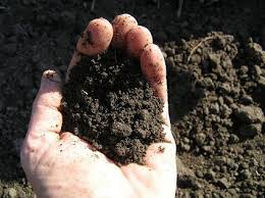
Loamy-Clay
Soil: Loamy-Clay, loam is a fertile soil containing clay, sand and stack material, and clay is clay. The soil is fertile, but due to the strong water retention capacity of clay, the drainage capacity is low, and it is easy to make the soil oxygen on the low side.
Shade trees use Inga and Graviola with large leaves. Both are big leaves and edible fruits. Inga can also convert nitrogen in the air into nutrients. (Nitrogen fixation)
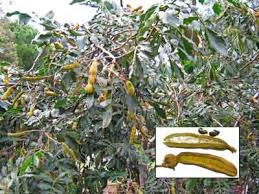
Inga tree
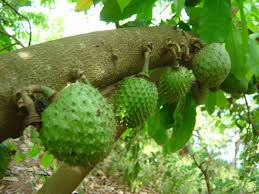
Graviola tree
Treatment method: washing
Drying method: insolation
Grinding step: the former mill equipment was located in Palin, but now it has moved out of Guardia City because of the improvement of quality.
Area: 51 hectares, of which 34 hectares are used for coffee cultivation.
Varieties: catuai, caturra, bourbon, pacamara
Hope Manor was founded in 1956, when it was located in El Bojonal, and then moved to 霍加 Blanca. His son Aurelio Villatoro Castillo is also in the coffee business and his Villaure estate produces high-quality beans. Due to the steep terrain of Hope Manor, the harvesting work is not easy, so we should pick it by hand. The communication of coffee fruit is processed within 6 hours of harvest. This village won its first COE in 2009.
2) another Hope Manor in Guatemala (Finca La Esperanza)
The current owner Mr. Otto Rapheal Herrera Sosa
The estate is located in San Pedro Necta (San Pedro Necta), Chichimes, in Huehuetenango, northwest of Guatamala.
It's southeast of La Libertad. Chichimes geographical conditions are also steep slopes, the manor is located at a high altitude of 1800 meters. Due to the relatively slow growth of coffee grown in the mountains, most of the coffee beans produced on this estate are very hard beans strictly hard bean (SHB).
Treatment method: washing
Drying method: Patio Dry
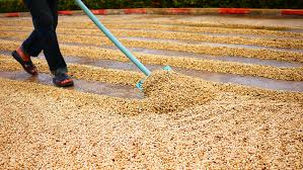
Area: 67 hectares.
Variety: Caturra, Bourbon, Catuai,Catimor
Hope Manor was founded by Mr. Octavio Rafael Herrera Ordo ñ ez in 1974 and now inherited by his son Otto Rapheal Herrera Sosa, insisting on the use of organic ingredients and coffee seedlings without genetic technology.
The more common bean is Los Cedros, where coffee trees get their name because they are surrounded by pine trees.
3) Manor of Hope in Panama (Hacienda La Esperanza)
The owner Mr. Jose Pretto
Hacienda also means Finca (farmland). The coffee estate is located in Boquete, the coffee producing area of Chiriqu í province in western Panama, facing Chiriki Bay in the Pacific Ocean. The village is located in the Alto Lino mountains, the highland is affected by the Caribbean mountains to the east, the environment is humid, cloudy and the temperature is lower than that of other areas. The manor is even more in the tropical rain forest. Due to the active volcanoes in the Boquete area, the soil of Panama belongs to volcanic soil. The average high altitude of the manor is 1400-1600 meters.

Wet pulping
Treatment: after Wet pulp, wash / have a small amount of sunlight
Drying method: Concrete Patio Dried
Variety: Caturra, Typica, Catuai
The coffee estate had a poor initial operating environment and reproduced recognized boutique coffee after refurbishment in 2008 / 09. The farm has 60% Caturra,20% Typica and 20%Catuai coffee. The manor has native shade and INGA trees to nourish the soil, as well as oranges and other tropical fruit trees such as guava, lemon and grapefruit. There is a stream on one side of the manor. The processed coffee cherry shell and mucus will be retained as plant fertilizer, and the garden is also organically certified. The farm imports several small farm tractors from the United States, and workers do not have to carry sacks full of coffee on their shoulders.
4) New Hope Manor Mexico (Finca Nueva Esperanza)
The owner Ms. Celia Moreno Corzo
The estate is located in La Concordia in the southeastern part of Mexico-Chiapas, Chiapas. (La Concordia, Chiapas, Mexico). To the east is Guatemala and to the south is the Pacific Ocean. The manor is close to the Biosphere Reserve conservation circle called El Triunfo. The environmental factors are a bit like Huehuetenango, but the fog and humidity are heavier here.
Due to the lower elevation of Mexico than other Central American terrain, the treatment and drying methods are uneven, so the quality of coffee varies.
But La Concordia's geographical advantages, coupled with the efforts of farmers, made it into the top 10 of the COE in 2015 (the three estates include Nuevo Vergel, La Distancia and Arroyo Negro). The manor is located at a high altitude of 1380-1500 meters.
Soil: volcanic soil rich in iron
Treatment method: washing
Drying method: Patio Dried
Area: 100 hectares.
Varieties: Typica, Bourbon red & yellow, Caturra red & yellow, Catuai
The owner and her husband Ricardo Baumann Brenner bought the farmland in 1960 for their Cafetal and named it "New Hope Manor". Mr. Brenner died in 1973, and the owner took care of the estate with his son. Planting, harvesting, treatment, drying, every step is carefully managed.
The owner insists on using organic raw materials and does not use pesticides or chemical fertilizers. The manor has organic certification. The manor is harvested by hand, and the workers are trained to pick ripe coffee fruits. She is proud of her manor, coffee trees and workers.
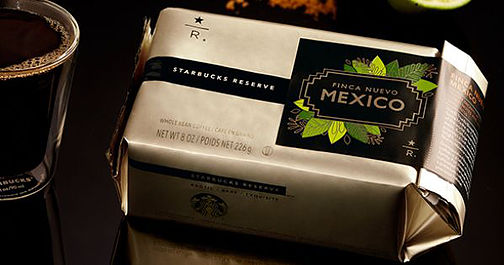
Star MEXICO RESERVE series comes from this village, specially selected for Caturra and Catuaí produced on 10 hectares of farmland at an altitude of 1400 meters.
Following the previous presentation of Hope Manor in Guatemala, Panama and Mexico. El Salvador also has a lot of farmland called Hope. This time we will look at the Hope Manor of Magaña and Pacas families. The other is the more widely known Colombia Café Granja La Esperanza.
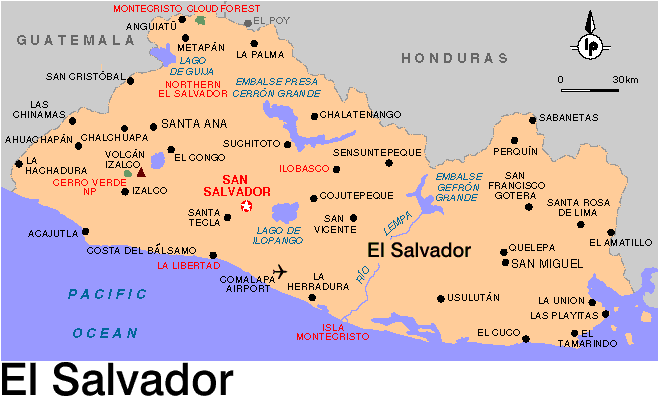
1) Hope Manor of Maga ñ a Men é ndez Cafe in El Salvador
Owners Mr. Gustavo Maga ñ an and Enrique Maga ñ a-El Salvador.
The estate is located in Apaneca, El Salvador, west of El Salvador. Apaneca in Navat means river in the wind, meaning that it belongs to high terrain and has a cool breeze.
Located in the mountains of Apaneca-Llamatepec, the manor is another biosphere inhabited by a variety of organisms. There are four active volcanoes in the area, of which Santa Anna, which erupted in 2005, belongs to fertile volcanic soil.
La Esperanza is one of their estates. Others include Finca Las Pampas, Finca Las Victorias, Finca Las Violetas, Finca Piemonte, Finca Juan, Finca Buenos Aires, Fina Florida and Finca San Ramon.
Finca La Esperanza is the first manor they bought in the 1800s, and most of the "La Esperanza" bought on the market are SHG and HG from the farmland.
Hope Manor is located at a high altitude of 1300-1400 meters and is certified by the Rainforest Alliance (Rainforest Alliance Certified).
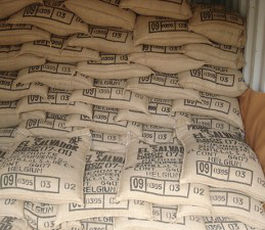
Other estates of Maga ñ a Menn é ndez Cafe
★ Finca Buenos Aires
The estate is located in Laguna de Las Ranas in Juayhost a, Sonsonate province, to the west of El Salvador. Located next to Mount Santa Ana, the soil is sandy loam (sandy loam). This kind of soil has good drainage capacity and is very suitable for planting.

Sandy loam includes sand (sand), loess (slit), and clay (clay).
The manor is located at a high altitude of 1530-1700 meters. Due to the high clouds and fog in this area, the coffee beans produced are larger and have higher acidity.
Area: 112ha, of which 65% is used for planting Bourbon,35% for forest conservation.
★ Finca Florida
The estate is located in the province of Santa Ana (Santa Ana) around Mount Chingo (El Chingo) in Chalchuapa, northwest of El Salvador.
The manor is located at a high altitude of 850-1100 meters. Because there are more rocks in this area, it belongs to volcanic soil and has more shade trees, which makes the soil more humid.
Area: 104ha, of which 85% is used to grow Sarchimore, Catimore, Caturra and Catuai,15% for natural mountains and lava.
★ Finca Las Pampas
The estate was bought by the Maga ñ a Menn é ndez family in the 1900s and is located in the Apaneca mountains in western El Salvador.
The manor is located at a high altitude of 1300-1400 meters, belonging to volcanic soil and fertile soil.
Area: 60 hectares, of which 92% is used for planting Bourbon and red Caturra,8% is a natural mountain range.
★ Finca Las Victorias
The estate was bought by the Maga ñ a Menn é ndez family in the late 1800s and is located in the Apaneca mountains in western El Salvador.
The manor is located at a high altitude of 1400 meters, belonging to volcanic soil and fertile soil.
Area: 55 hectares, 100% for growing Bourbon, Bourbon Salmon Catimore and Catuai.
★ Finca Las Violetas
The estate was bought by the Maga ñ a Menn é ndez family in the late 1800s and is located in the Apaneca mountains in western El Salvador.
The manor is located at a high altitude of 1420 meters because of the fertile soil in this area.
Area: 20 hectares, of which 90% are used for planting Bourbon and Catuai,10% for residential use.
★ Finca Piemonte
The estate is located in Laguna las Ninfas, Apaneca, west of El Salvador. At a high altitude of 1420 meters, the coffee beans produced are larger and more acidic. -
Area: 52 hectares, 100% for growing Bourbon.
★ Finca San Juan
The estate is located in Concepcion de n de Ataco, in the province of Avachapan (Ahuachap á n), in the west of El Salvador. When the coffee field is renovated every year, there is a warm need for a nursery to temporarily place coffee seedlings.
The manor is located at a high altitude of 1100-1200 meters.
Area: 52 hectares, 100% for growing Bourbon, red Caturra, yellow Caturra and Catuai.
★ Finca San Ram ó n
The estate is located in Laguna las Ninfas, Apaneca, west of El Salvador.
There is Beneficio San Ram ó n, the coffee processing plant of the Maga ñ a Menn é ndez family, which handles coffee beans from all the family's farmland. Treatment method: washing, and drying method is full sun and first use the dryer and then the sun (Raised Bed).
The manor is located at a high altitude of 1000-1260 meters.
Area: 150ha, 95% is used for planting Bourbon.
2) Manor of Hope in Maria and Alfredo Pacas, El Salvador
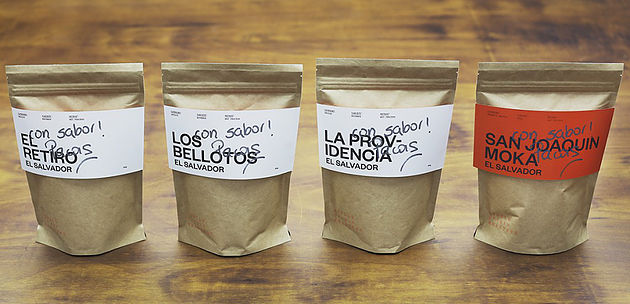
At present, the owner is Maria and Alfredo Pacas.
This Hope Manor is one of the estates of the Pacas family. It is also in the mountains of Apaneca-Llamatepec. At a high altitude of 1000-1600 meters, the highest field is called La Clima.
In the 1800s, when Jose Rosa Pacas, bought the farmland and planted Bourbon varieties. In the 1900s, posterity Fernando Alberto Pacas Figueroa studied different planting methods and cultivated different varieties including: Maragojipe, San Ram ó n Bourbon. Later, it was found that one variety was different from bourbon, which was confirmed and named after pacas. As the planting methods become more and more mature, the production of coffee increases. It was not until the age of Fernando Alfredo Pacas Diaz that they began to process and export their own coffee beans. The current leader is the fifth generation brother and sister Maria and Alfredo Pacas Diaz, who make good use of a variety of traditional methods, including mixed AGOVIO PARA scaffolding, properly shaded farmland, old tree species, and soil management.
This manor is dominated by Bourbon, and others are red, orange, yellow Bourbon, Pacamaras, Typicas, and Pacas, which is named after itself.
Shade trees are Igna, Eucalyptus, cedar and so on.
The characteristics of Pacas coffee bean varieties are
1) the branches of the tree are relatively close.
2) less pruning is needed.
3) be able to grow without shade and at different elevations (but not more than 1500m, because maturity is slow)
4) it is more resistant to pests, especially to the roots.
5) able to withstand strong winds
6) Coffee beans are relatively large
In addition to working on farming, the PACAS family has also promoted the development of the community, sponsoring two local schools to keep the next generation away from violence or crime. In addition, it has also promoted a coffee certification scheme to make more locals more aware of the process of coffee from growing to buying and selling.
Treatment methods: washing, tanning, honey treatment, they have their own treatment plant-Pacas Family Mill Vivagua (both washing and drying methods).
Drying method: Natural Sun Dried, Patio Dried, Raised Bed
Area: about 88 hectares, of which 9 hectares are used for rainforest conservation and endangered plants.
3) Colombian Hope Manor Caf é Granja La Esperanza
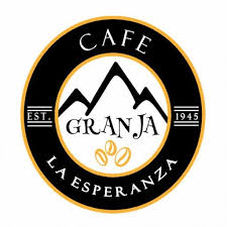
Cafe Granja La Esperanza is made up of six farmland in El Valle del Cauca and Cundinamarca under the Herrera family, owned by Rigoberto Herrera.
Farmland in Colombia includes La Esperanza, Cerro Azul, Potosi and Las Margaritas, Hawaii, covering eight microclimate zones.
La Esperanza, Cerro Azul, Potosi and Las Margaritas are all located in Trujillo. Valle del Cauca is the province of western Colombia. The province faces the Pacific Ocean.
Trujillo is in the mountains to the east, which has relatively flat terrain and is also located to the west of the Cauca River, ranging from 1000 to 3000 meters above sea level. The warm climate of the valley meets the cold air of the Pacific Ocean, making the average temperature and rainfall suitable for coffee growth.
The soil suitable for planting in this area contains volcanic ash and organic matter, but the phosphorus quality in this area is generally low, so Caf é Granja La Esperanza also prepares its own natural fertilizers to ensure the health of coffee trees and the quality of coffee beans.
Interestingly, there is a coffee tree called Laurina (BOURBON species) grown in Granja La Esperanza. Its fruit is naturally decaffeinated, but it produces less because the fruit is more fragile than the average coffee fruit.
There are Caturra, Geisha, Moka,Bourbon (including red, yellow and Tekizik), Laurina, Pacamara, San Bernardo and Pache in La Esperanza garden.
Height comparison:
La esperanza:1400-1700 m
Cerro Azul:1700-2000 m
Potosi:1400-2000 m
Las Margaritas:1400-1800 m
Area comparison:
La esperanza:34
Cerro Azul:18 ha
Potosi:52 ha
Las Margaritas:34 ha
Geisha short story of Caf é Granja La Esperanza:
The La Cardeida estate in Boquete, Panama, Panama, which the Herrera family rented in 2005, is next to La Esmeralda, which is famous for its Geisha. At first, the botanist Hernando Tapasco helped to plant the Geisha variety, and at the beginning, the breeding team spent two years in Panama to learn the characteristics of geisha. Successful in "The Best of Panama" in 2008, La Cardeida's Geisha won the championship. In 2012, Coffee of the year at SCAA won second, third and seventh places for washing Geisha under Cerro Azul,Las Magaritas and Buenos Aires, respectively.
Geisha varieties are also grown in La Esperanza, including rare organic certified varieties (Geisha organica). All fruits are harvested by hand, and workers harvest them more frequently than usual to ensure their quality.
Other manor features:
☁ Cerro azul
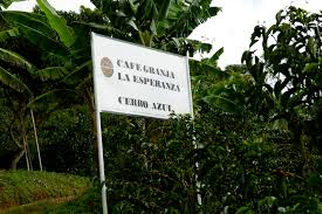
Next to the La Esperanza, the terrain is relatively high. although there is strong sunshine, there are clouds at sunset and sunrise, reducing moisture evaporation and cooling effect. The location of the valley converts the Pacific sea breeze into cloudy clouds, coupled with volcanic soil and sufficient Rain Water, which is very suitable for Geisha growth. Although about seven varieties and about 45000 Geisha have been planted here, the naming is so strict that only 5000 to 7000 of them can show the characteristics of Cerro azul. What can be called AAA reserve is two of the seven varieties, and if they grow at an altitude of 1800-2000 meters.
The coffee is washed with full water, which includes 16 hours of fermentation, then the water is removed in the dryer and the sun is used for raised bed drying. The harvesters here must undergo five months of training.
☁ Las Magaritas

A little further than Cerro Azul, in the mountains of central Colombia, part of the Andes. The soil, height and weather are the best, so there are many rare species here, such as Pacamara, Red Bourbon, Yellow Bourbon, Tekisic, Mokka. In addition to Geisha, there is also a kind called Sudan Rume, which has bronze leaves. This kind of tree can resist the diseases of many coffee trees and is mostly used for mixed scaffolding. It is said that the cup test is not inferior to Geisha, but the growth is not as stable as Geisha, so it has not been propagated in large numbers.
Las Margaritas's Geisha needs to be fermented for 14 hours and washed in full sunlight. Due to the humid climate here, there are few other beans that are completely dependent on the sun.
Let's compare the appearance of Geisha, Sudan Rume and Laurina coffee seedlings.
(photo source: Cafe Imports)

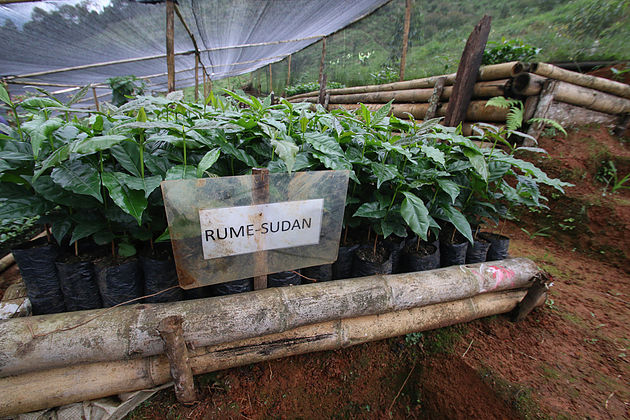
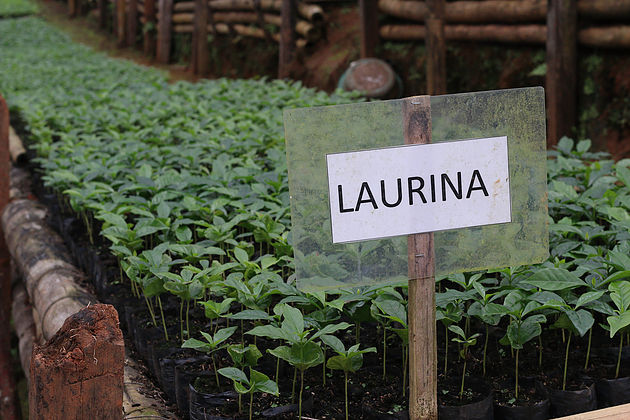
☁ Potosi
Farmland and Las Magaritas face. It has been planted since the time of Rigoberto Herrera's great-grandfather, so the varieties are mainly Colombian variety and caturra.
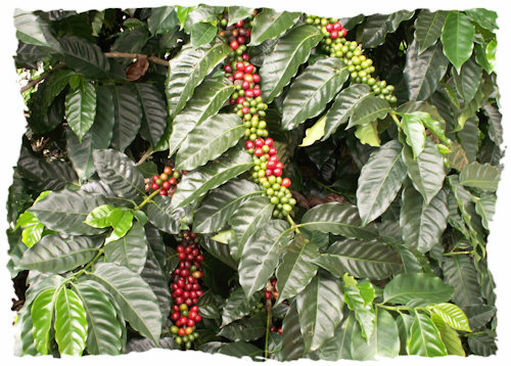
Caturra coffee tree
Apart from attaching importance to the quality of coffee, the manor also pays attention to environmental protection and staff welfare, and has implemented different ways to improve talents, optimize the environment and productivity.
Important Notice :
前街咖啡 FrontStreet Coffee has moved to new addredd:
FrontStreet Coffee Address: 315,Donghua East Road,GuangZhou
Tel:020 38364473
- Prev
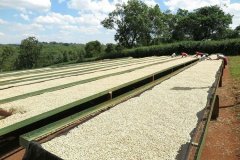
Los Andes Manor Kenya SL28 Coffee introduces Nate's four manors
El Salvador's unique Kenyan style-Los Andes Manor Los Andes Manor-Los Andes farm, not far from the city of Santa Ana (Santa Ana), if the weather is good, about 1 hour to arrive, in fact, Santa Anna City is in the foot of the Santa Ana volcanic area, such as the well-known legend Neto, he is proud of the four estates-Fantasy, Brumas, A
- Next
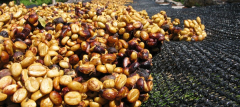
Introduction to the flavor and taste of coffee treated with honey from Brumas Farm, the Honey King of Costa Rica
Professional baristas Please follow the Coffee Workshop (Wechat official account qianjiecoffee) Costa Rica is the most stable and best quality coffee in Central America, with a very long history of production which was exported to Britain as early as the 1800s of the 19th century. Due to the narrow and long terrain, there are great differences in natural conditions such as latitude, altitude, soil, rainfall, temperature and so on.
Related
- Does Rose Summer choose Blue, Green or Red? Detailed explanation of Rose Summer Coffee plots and Classification in Panamanian Jade Manor
- What is the difference between the origin, producing area, processing plant, cooperative and manor of coffee beans?
- How fine does the espresso powder fit? how to grind the espresso?
- Sca coffee roasting degree color card coffee roasting degree 8 roasting color values what do you mean?
- The practice of lattes: how to make lattes at home
- Introduction to Indonesian Fine Coffee beans-- Java Coffee producing area of Indonesian Arabica Coffee
- How much will the flavor of light and medium roasted rose summer be expressed? What baking level is rose summer suitable for?
- Introduction to the characteristics of washing, sun-drying or wet-planing coffee commonly used in Mantenin, Indonesia
- Price characteristics of Arabica Coffee Bean Starbucks introduction to Manning Coffee Bean Taste producing area Variety Manor
- What is the authentic Yega flavor? What are the flavor characteristics of the really excellent Yejasuffi coffee beans?

